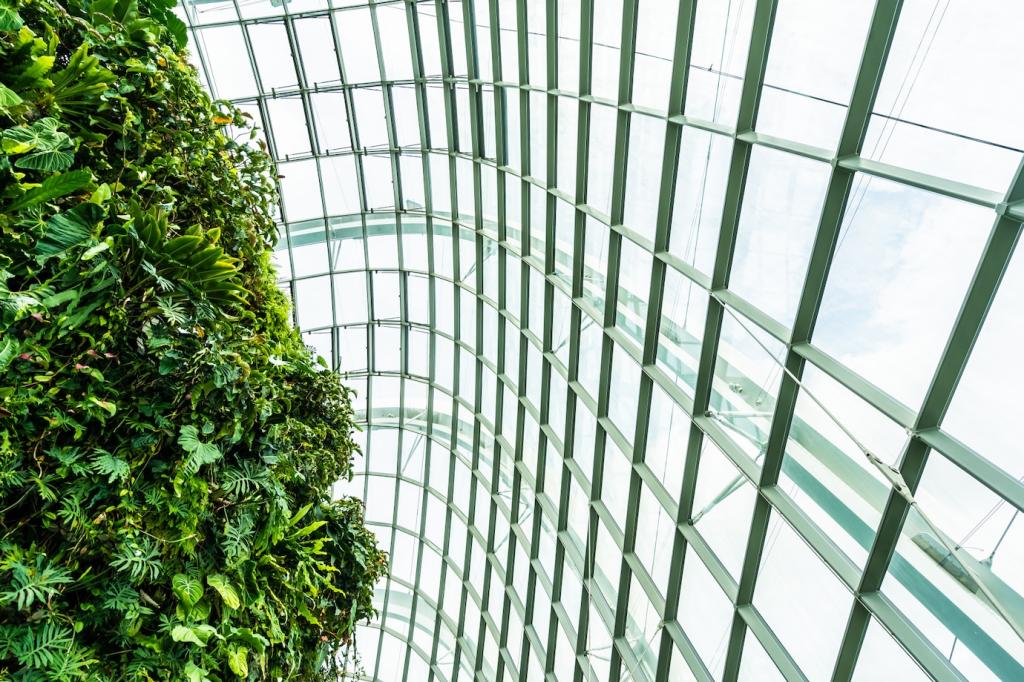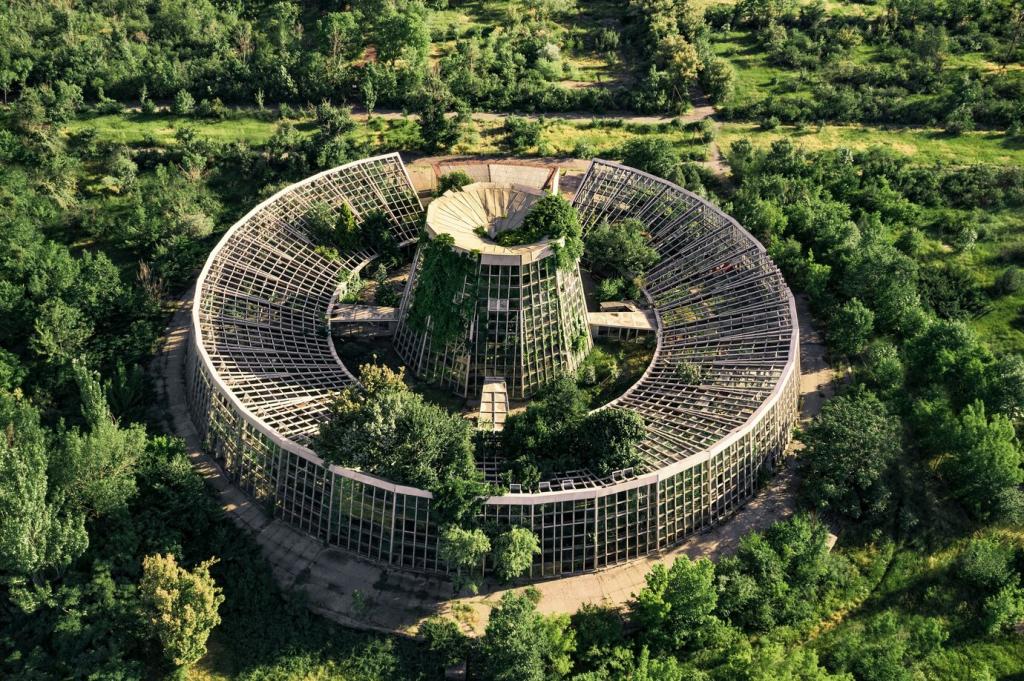Green roofs and living walls are innovative solutions in architecture and urban design, transforming conventional buildings into vibrant, eco-friendly spaces. These living systems not only provide aesthetic appeal but also deliver significant environmental, economic, and social benefits. By integrating vegetation into urban infrastructure, green roofs and living walls contribute to sustainable urban development, improving air quality, reducing energy consumption, managing stormwater, and enhancing biodiversity. This page delves into the concept, benefits, design considerations, and future potential of green roofs and living walls.
The Concept of Green Roofs and Living Walls
Definitions and Types
Green roofs, often referred to as vegetative or eco-roofs, are constructed by layering waterproofing membranes, root barriers, drainage systems, lightweight soil substrates, and plants atop traditional roofing structures. They are generally categorized as either extensive or intensive systems, depending on the depth of their soil profile and the maintenance required. Extensive green roofs feature shallow soil depths and low-profile plants like sedum, whereas intensive systems support deeper soil, larger plants, and even small trees, resembling rooftop gardens. Living walls, sometimes called vertical gardens or green facades, integrate greenery vertically using modular panels, trellis systems, or hydroponics. Both green roofs and living walls can be tailored for exterior or interior environments, with various plant species and technologies selected to fit specific climatic, functional, and aesthetic requirements.
History and Evolution
The application of green roofs and living walls dates back centuries, with historic precedents found in structures such as the Hanging Gardens of Babylon and sod-covered dwellings in Scandinavia. In modern times, technological advancements and greater awareness of urban sustainability have fueled a global resurgence in these practices. The late 20th century saw Europe, particularly Germany and Switzerland, pioneering green roof technology with government incentives and robust research programs. Over the last few decades, living architecture has gained momentum worldwide, addressing the challenges posed by increased urban density and climate change. Today, cities worldwide are adopting green roofs and living walls as standard features in urban planning, transforming concrete jungles into dynamic living environments that harmonize with nature.
Components and Materials
The successful installation of green roofs and living walls depends on thoughtfully engineered components and high-quality materials. Green roofs are typically comprised of a waterproof membrane to prevent leaks, a root barrier to inhibit plant roots from damaging the building structure, a drainage layer for effective water movement, a filter layer to prevent soil loss, lightweight growing media, and suitable plant species adapted to local conditions. Living wall systems involve vertical mounting panels or trellises, irrigation networks, growth substrates, and support frameworks capable of withstanding wind and weight loads. Each component must be compatible, durable, and designed for longevity, ensuring a thriving ecosystem with minimal maintenance needs. With the right assembly and materials, these systems can endure harsh weather, reduce maintenance burdens, and provide long-lasting environmental benefits.
Environmental and Economic Benefits
Improved Air Quality and Energy Efficiency
Green roofs and living walls significantly improve urban air quality by filtering airborne pollutants and particulates through their foliage and substrates. As plants absorb carbon dioxide and release oxygen during photosynthesis, they contribute to cleaner, healthier urban atmospheres. In addition to their air-purifying capabilities, these living systems enhance energy efficiency in buildings. By providing natural insulation, green roofs and living walls reduce indoor temperature fluctuations, lowering the demand for heating in winter and cooling in summer. This insulation effect not only diminishes energy consumption but also alleviates strain on citywide power grids, reducing greenhouse gas emissions associated with energy production. Over time, these cumulative effects help cities combat heat islands while promoting healthier indoor and outdoor environments.


Stormwater Management and Biodiversity
Urban areas often struggle with excess stormwater runoff due to the predominance of impervious surfaces like concrete and asphalt. Green roofs and living walls offer a solution by retaining rainfall in their substrate, gradually releasing it through evapotranspiration or controlled drainage. This natural water management reduces the burden on municipal sewer systems, decreases the risk of flooding, and improves water quality by filtering contaminants. Furthermore, the vegetation incorporated into these systems fosters local biodiversity. Green roofs and living walls provide habitats for insects, birds, and pollinators, strengthening ecological corridors within otherwise inhospitable urban landscapes. These interventions help restore balance to city ecosystems, encouraging the return of native flora and fauna to metropolitan areas.
Design Considerations and Implementation
Structural Assessment and Site Analysis
Before installing a green roof or living wall, a comprehensive structural assessment of the building is essential to determine its load-bearing capacity and suitability for added weight. Engineers and architects evaluate roof or wall conditions, paying close attention to waterproofing, penetration points, and overall integrity. Site analysis considers factors like solar exposure, wind patterns, rainfall, and surrounding vegetation to inform species selection and system design. For rooftops especially, safety measures such as parapets, access walkways, and fall protection must be planned. These preliminary steps set the foundation for a successful project, mitigating risks and ensuring that the living system thrives without compromising the primary structure’s longevity.
Plant Selection and Ecosystem Design
Selecting the right plants for green roofs and living walls is a critical decision impacting the system’s success, resilience, and visual impact. Designers choose species based on climate compatibility, growth habit, root structures, water needs, and aesthetics. Native and drought-tolerant species are often favored for their adaptability and ecological benefits. On extensive green roofs, low-maintenance succulents or grasses are common, while intensive systems can host a wider variety of perennials, shrubs, and even small trees. In living walls, plant choices depend on available light, wall orientation, and maintenance capabilities. The ecosystem design moves beyond decoration, aiming to create balanced plant communities that support insect life, enhance pollination, and require minimal intervention. Proper plant selection ensures year-round beauty as well as lasting environmental benefits.
Installation and Maintenance Protocols
The installation of green roofs and living walls involves coordinated efforts among architects, horticulturists, engineers, and specialized contractors. Proper sequencing of membrane installation, drainage layout, substrate placement, and plant introduction is vital to prevent future issues such as leaks or plant failure. Once installed, living systems require an initial establishment period with regular watering, fertilization, and monitoring to ensure plant health. Long-term maintenance protocols include pruning, weed control, system inspections, and irrigation adjustments. Automated irrigation and remote monitoring technologies can reduce maintenance burdens, but ongoing human attention is still necessary to address unexpected issues. A well-designed and properly maintained green roof or living wall delivers enduring value, maximizing both environmental impact and aesthetic enjoyment for years to come.
